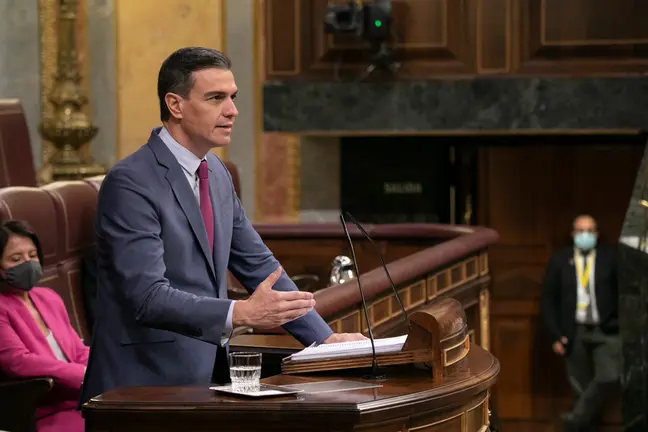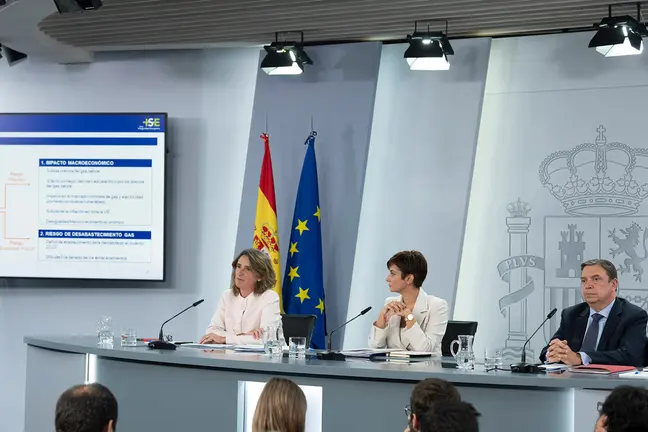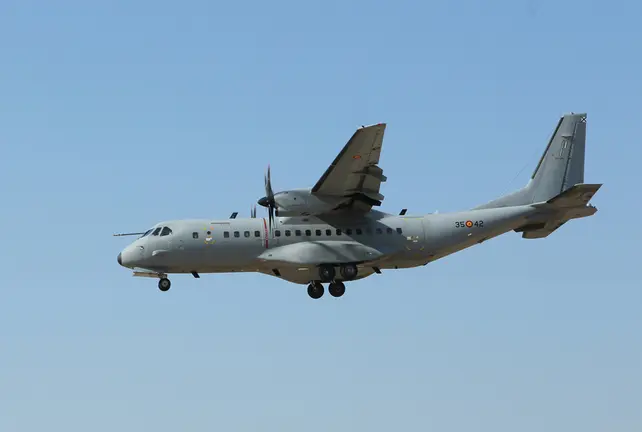Spanish Prime Minister Pedro Sanchez has promised quick help to all those affected after a volcanic eruption on the Canary island of La Palma.
"The citizens of the island can rest assured because the state has sufficient resources and personnel at its disposal," Sanchez said early on Monday. He cancelled a planned US visit and flew to the island.
The volcano resumed activity on Sunday, for the first time in 50 years. Throughout the night, several lava flows of around 1,000 degrees Celsius continued to roll downhill towards built-up areas at a speed of about 700 metres per hour.
Several houses have already been destroyed or damaged, state broadcaster RTVE reported on Monday. About 5,000 people have been evacuated from endangered areas so far, according to police, with 500 of them tourists.
The island has a total of about 83,000 inhabitants. No injuries were initially reported.
One woman, visibly shaken, said the lava had destroyed homes "like butter," in comments to RTVE.
She ran a small hotel that was ruined by the eruption. "When the lava reaches a house, in seconds there is nothing left, just a black mass," she said.
Another called the sight of the lava frightening. "It is an unbelievable natural spectacle that scares you," Maria del Pino Hernandez told El Diario.es newspaper.
The lava is destroying everything it meets, from trees to banana plantations, fields, roads, power lines and dozens of houses so far.
Burned homes
Some 150 homes were burned in the town of Los Llanos de Aridane.
The eruption had been expected after thousands of seismic shocks in the past few days. In addition, the ground had been pushed upwards slightly in some places, indicating that magma was accumulating under the Cumbre Vieja.
Ahead of the eruption, the authorities told people to prepare light luggage in case they needed to flee, and were told where to gather in case they had to evacuate.
Elderly and disabled people were moved to safety just before the volcano erupted.
Air traffic has not yet been suspended, however.
Some 17 to 20 million cubic metres of magma may have accumulated under the volcano, RTVE reported, citing the regional head of the Canary Islands, Angel Victor Torres.
'Unpredictable'
Volcanologist Stavros Meletlidis said it was unclear what would happen next, and that volcanoes are unpredictable.
"We only have very simple models of the extremely complicated processes under our feet," he said, adding it was unclear how long the eruption may last.
"We don't know. There are eruptions that end after nine days and some that last years."
La Palma is located in the far north-west of the Canary Islands, a group of islands in the Atlantic Ocean off the west coast of Africa.
It is 85 kilometres from the nearest larger island, Tenerife, which is very popular with tourists, and 57 kilometres from La Gomera.
The youngest of the Canary Islands last experienced a volcanic eruption 50 years ago, when Teneguia spewed lava into the air in 1971. There is no mass tourism on La Palma, unlike the better-known islands of Gran Canaria, Fuerteventura, Lanzarote and Tenerife.










